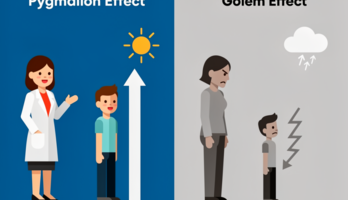A.J. Bard, L.R. Faulkner - Electrochemical methods - Fundamentals and Applications (794273), страница 87
Текст из файла (страница 87)
The rod is attached to a motor directly by achuck or by a flexible rotating shaft or pulley arrangement and is rotated at a certain frequency,/(revolutions per second). The more useful descriptor of rotation rate is the angular velocity, со(s" 1 ), where a) = 2тг/. Electrical connection is made to the electrode by means of a brush contact; the noise level observed in the current at the RDE depends on this contact. Carbon-silver(Graphalloy) materials are frequently used. Details of the construction and application ofRDEs are given in several reviews (7-11); RDEs are available commercially.9.3.1The Velocity Profile at the RDEThe velocity profile, v, of a fluid near a rotating disk was obtained by von Karman andCochran by solving the hydrodynamic equations under steady-state conditions (1).
Thespinning disk drags the fluid at its surface along with it and, because of centrifugal force,flings the solution outward from the center in a radial direction. The fluid at the disk surface is replenished by a flow normal to the surface. Because of the symmetry of the system, it is convenient to write the hydrodynamic equations in terms of the cylindricalcoordinates y, r, and ф (Figure 9.3.2). For cylindrical coordinates,(9.3.1)(9.3.2)V =V=_ BrushcontactShaft _(brass)"Disk(platinum)Insulator(Teflon)Bottom viewFigure 9.3.1Rotating disk electrode.336Chapter 9.
Methods Involving Forced Convection—Hydrodynamic MethodsFigure 9.3.2 Cylindrical polar coordinates for therotating disk.where JJLI, |X2, and |Хз are unit vectors in the directions of positive changes of r, y, and ф ata given point. In contrast to the usual cartesian vectors, i, j , and k, the vectors \ih |A2> a n dIX3 have directions that depend on the position of the point; thus the divergence and theLaplacian take on more complex forms.
In particular,v . v = Анг-(9.3.3)"*[*((9.3.4)Г— + —гдф\ дфдг)дуIt is assumed that gravitational effects are absent (f = 0) and that there are no special floweffects at the edge of the disk. At the disk surface (y = 0), vT = 0, vy = 0, and u^ = cor. Thisimplies that the solution is dragged along at the surface of the disk at the angular velocity,со. In the bulk solution (y —> 00), vr = 0, v$ = 0, and vy = —UQ.
Thus, far from the disk,there is no flow in the r and ф directions, but the solution flows at a limiting velocity, f/0» toward the disk, with Щ determined by the solution of the problem.The treatment by von Karman and Cochran yielded values of the velocities in theform of infinite series based on the dimensionless variable 7, whereУ = (%fyThe results for small values of у (у «(9-3.5)1) are(У21 3и г = rcoF{y) = гсо\ ау — — — фу + •иф = rcoG(y) = rco{\ + by + | я у 3 + • • •)3 , 4\((9.3.6)(9.3.7)(9.3.8)2-ау equations+ у + -|•velocities• • J at greaterin which a = 0.51023 and b = -0.6159.
Suitablefor+thedistances from the electrode (y »1) are given by Levich (1).For the rotating disk electrode as employed in electrochemical studies, the importantvelocities are vT and vy (Figure 9.3.3). Near the surface of the rotating disk, у —» 0 (or у —>0), and these velocities are given by:vy = (cov)l/2(-ay2)= -0.51a> 3 / V 1 / 2 y 23/2l/2vT = rco(ay) = 0.5lco v~ ry(9.3.9)(9.3.10)9.3 Rotating Disk Electrode337Figure 9.3.3 Variation of normal (vy) and radial(vr) fluid velocities as functions of у and r.A vector representation of the flow velocities is shown in Figure 9.3.4.
The limitingvelocity in the у direction, UQ, isЩ = lim v = -0.88447(а^) 1 / 2(9.3.11)At у = (a)/v)l/2y = 3.6, vy ~ O.8£/o- The corresponding distance, vh = 3.6(v/co)l/2, iscalled the hydrodynamic (or sometimes the momentum or Prandtl) boundary layer thickness and roughly represents the thickness of the layer of liquid dragged by the rotatingdisk. For water (y « 0.01 cm2/s) at со = 100 and 104 s" 1 , yh is 0.036 and 3.6 X 10" 3 cm,respectively.9.3.2Solution of the Convective-Diffusion EquationOnce the velocity profile has been determined, the convective-diffusion equation,(9.2.5), for the rotating disk electrode, written in convenient coordinates and with appropriate boundary conditions, can be solved.
Let us first consider the steady-state lim-j = 0i, ,Figure 9.3.4 (a) Vectorrepresentation of fluid velocitiesnear a rotating disk, (b) Schematicresultant streamlines (or flows).338 • Chapter 9. Methods Involving Forced Convection—Hydrodynamic Methodsiting current.
When со is fixed and a steady velocity profile has been attained, a potentialstep in the limiting current region [i.e., where Co(y = 0) ~ 0] will cause the appearanceof a current transient similar to that observed in the absence of convection. However, incontrast to the transient that appears in an unstirred solution at a planar electrode, whichdecays toward zero, the current at the RDE decays to a steady-state value. In the limit,the concentrations near the electrode are no longer functions of time, дСо/dt = 0, andthe steady-state convective-diffusion equation, written in terms of cylindrical coordinates, becomes•*CO\ ,(dCo\ _22\d Co— L)r\\— ~\d Coi *Co2I (d C0r— ~t~ — — - — ~r —-(9.3.12)For the limiting current condition, at у = 0, CQ = 0, and lim C o —CCQ.
For reasons ofsymmetry, C o is not a function of ф; therefore, дСо1дф = (д2Со/дф2) = 0. Also, vy doesnot depend on r (see equation 9.3.8), and at у = 0, (дСо1дг) — 0. Thus, across the face ofthe disk electrode, that is, 0 < r < r b where rx is the disk radius, (dCo/dr) = 0 for all v.These considerations lead to a considerable simplification in (9.3.12), yieldingdCr"(9.3.13)~ " -or, by substitution of the value of vy from (9.3.9) and rearrangement,д2Со_-у2дСоду2(9.3.14)В дуwhere В = DQCO~3/2V1/2/0.51.This equation can be solved directly by integration. Tomake the job easier, let X = дСо1ду, so that SX/dy = д2Со/ду2. At у = 0, X = Xo =(дСо/ду)у=0. Then (9.3.14) becomes(9.3.15)fy = (=f)x(9.3.16)(9.3.17)(9.3.18)Integrating once more, we can writeу(9.3.19)where the limits are set for a concentration profile with Co(y = 0) = 0, that is for limitingcurrent conditions.
The definite integral on the right side is obtained by making the substitution z = уъ1ЪВ, and is (ЗЯ)1/3Г(4/3) or 0.8934(ЗЯ)1/3. Thus,0.519.3 Rotating Disk Electrodei 339The current is the flux at the electrode surface, that is,(9.3.21)=0where, under the chosen current conditions, / = // c . From (9.3.20) and (9.3.21), we obtainthe Levich equation://fC =(9.3.22)This equation applies to the totally mass-transfer-limited condition at the RDE and predicts that / / c is proportional to CQ and a)l/2. One can define the Levich constant as// Jo)ll2C%, which is the RDE analog of the diffusion current constant or current functionin voltammetry or the transition time constant in chronopotentiometry.Recall that the simple steady-state diffusion layer model yielded (see equation 1.4.9)//tC = nFAmoCl=(9.3.23)Thus, for the RDE(9.3.24)то =8O =(9.3.25)The concepts and results of the diffusion-layer model can often be used in RDE problems and, when needed, the appropriate value of 8Q can be substituted to yield the finalequations.2While the Levich equation (9.3.22) suffices for many purposes, improved formsbased on derivations utilizing more terms in the velocity expression are available (12).9.3.3The Concentration ProfileThe concentration profile for the limiting-current condition can be obtained from (9.3.19)by integrating between 0 and Co(y); thus,дССо(У)From (9.3.20) we have(дСо\ЛexpЪВ•OB) -1/30.8934dy(9.3.26)(9.3.27)This can be put in a more convenient form by letting w3 = уЧЪВ, so that dy = йи{ЪВ)х1г.Then (9.3.26) becomesJ^exp^V*(9.3.28)2From the expression for the hydrodynamic boundary layer, yh, and (9.3.25), we obtain >^h/^o ~ 2(v/D) l/3 .
ForH 2 O, v = 0.01 cm2/s, Do « 10~5 cm2/s, so that 80 « 0.05 y^. The dimensionless ratio (v/D) occurs frequentlyin hydrodynamic problems and is called the Schmidt number, Sc.340 • Chapter 9. Methods Involving Forced Convection—Hydrodynamic Methodswhere Y = y/(3B)1^3. The concentration profile for CQ under these conditions is shown inFigure 9.3.5.9.3.4General Current-Potential Curves at the RDEFor nonlimiting-current conditions, only a change in integration limits in (9.3.19) is required. In general, at у = 0, C o = Co(y = 0) and (дСо1ду)у=0 is given by an analogue to(9.3.20), which yields(9.3.29)Thus,i = 0.62nFAD%W/2v~V6[Co- Co(y = 0)](9.3.30)or, from (9.3.22),1= «'/,c:g - co(y = 0)1JCQ(9.3.31a)Alternatively, (9.3.30) can be written in terms of 8O, as defined in (9.3.25), to yieldnFADo[C% - Co(y = 0)]= nFAmo[C% - Co(y = 0)](9.3.31b)Note that this equation is identical to that derived from the steady-state model in Section1.4.The current-potential curves for the simple reaction О + ne <^ R at the RDE can bederived from (9.3.31a) and the equivalent expression for the reduced form:CRУ"}(9.3.32)where(9.3.33)10I|I|rUI- I -||||0.8cojy)0.6 --0.4-0.2-Q/0Ii0.4II0.8II I1.21.8 (D/v)1/3I1.6I1(v/co) 'IIII2.42.0Figure 9.3.5 Concentration profile ofspecies О given in terms ofdimensionless coordinates.9.3 Rotating Disk Electrode341For a nernstian reaction, combination of the Nernst equation for the O,R couple with theequations for the various currents yields the familiar voltammetric wave equation:(9.334)where(9.3.35)Note that the shape of the wave for a reversible reaction is independent of a>.
















